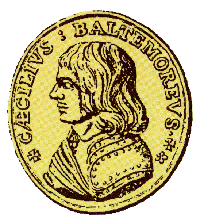
Annapolis, MD 21401
![]()
 |
Maryland State Archives |
350 Rowe Boulevard Annapolis, MD 21401 MD toll free (800) 235-4045
or (410) 260-6400
fax: (410) 974-2525
email:
msa.helpdesk@maryland.gov
|
|
|
||
|
On Demand Prints from the Maryland State Archives The Peabody Works on Paper Collection
The Peabody Works on Paper Collection is part of the larger art collection
named for George Peabody, founder of the Peabody Institute. Although established
in 1857, the Peabody Gallery did not begin to acquire works on art until
1873, when John W. McCoy, one of the institute�s trustees, presented a
sculpture, Clytie, by Maryland sculptor William Henry Rinehart. Subsequently,
other works were acquired and other prominent collectors from Baltimore
began to donate artwork to the Peabody Institute, which, by the end of
the nineteenth century, was established as the city�s premier cultural
institution. One of the most important collections to be acquired was that
of Charles James Madison Eaton, (1808-1893), an original trustee of the
Institute and member of the Art Gallery Committee.
Most of the works on paper in the Peabody Collection came to the Institute
through Eaton�s bequest in 1893, along with paintings, miniatures, porcelains,
and bronzes. They were collected during his travels abroad during the mid-nineteenth
century. Eaton�s interests were varied, as evidenced by the broad range
of subjects and artists represented in his collection. He developed a habit
of identifying each work of art with the name of the city where he purchased
it, and the year. Notations such as �Florence 1843� or �Roma 1845� on the
lower right bottom of several of the images presented here are in Eaton�s
hand. While these markings have led to some confusion as to the provenance
of the individual works, they are evidence of the fact that these pieces
were collected more as picture postcards for albums than as works of fine
art for individual display. Furthermore, rather than being purchased in
art galleries, or through professional dealers, works such as these were
usually purchased from flea markets and street vendors who targeted the
tourist audience.
A portion of the Eaton bequest, including many of the works on paper,
was originally collected by another Baltimorean, Robert Gilmor, Jr. (1774-1848),
who amassed a major collection over his lifetime ranging from ancient and
medieval art to the work of contemporary artists of his time. Gilmor purchased
a large number of works on paper during while traveling abroad beginning
as early as 1799. At a time when America laced major art museums and few
private galleries contained more than family portraits, Gilmor purchased
almost one thousand works, including drawings by eighteenth century Italian
draughtsmen, French artists, and artists across Europe from the well-known
to the unknown. Ranging from rough sketches, to more complete watercolor
compositions, these works on paper were kept in albums or portfolios, comprising
a �gentleman�s cabinet� of artwork, and demonstrating the collector�s developing
connoisseurship.
The images presented here represent only a fraction of the nearly 1100
original works on paper in the Peabody Collection encompassing fanciful,
historical, and contemporary subject matter of the seventeenth, eighteenth
and nineteenth centuries.
|
|
Tell Us What You Think About the Maryland State Archives Website!
|
© Copyright December 15, 2023 Maryland State Archives